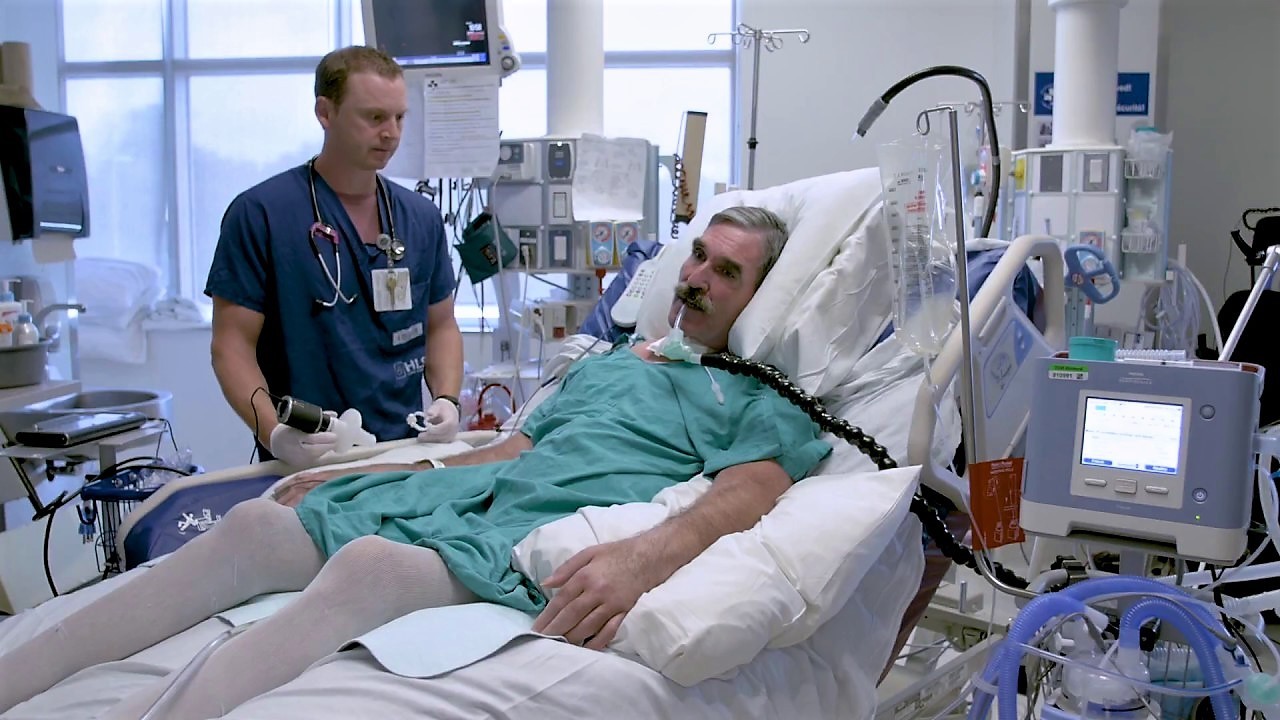
COVID-19 response enters crucial phase as 10,000 ventilators being produced by Brampton-based company
With the possibility of 1,600 deaths in Ontario by the end of the month, a Brampton company that joined the battle to fight COVID-19 is working to supply ventilators to hospitals around the province.
On April 1, Premier Doug Ford tweeted the government had signed a deal with the local manufacturer, O-Two Medical Tech, and ordered 10,000 ventilators.
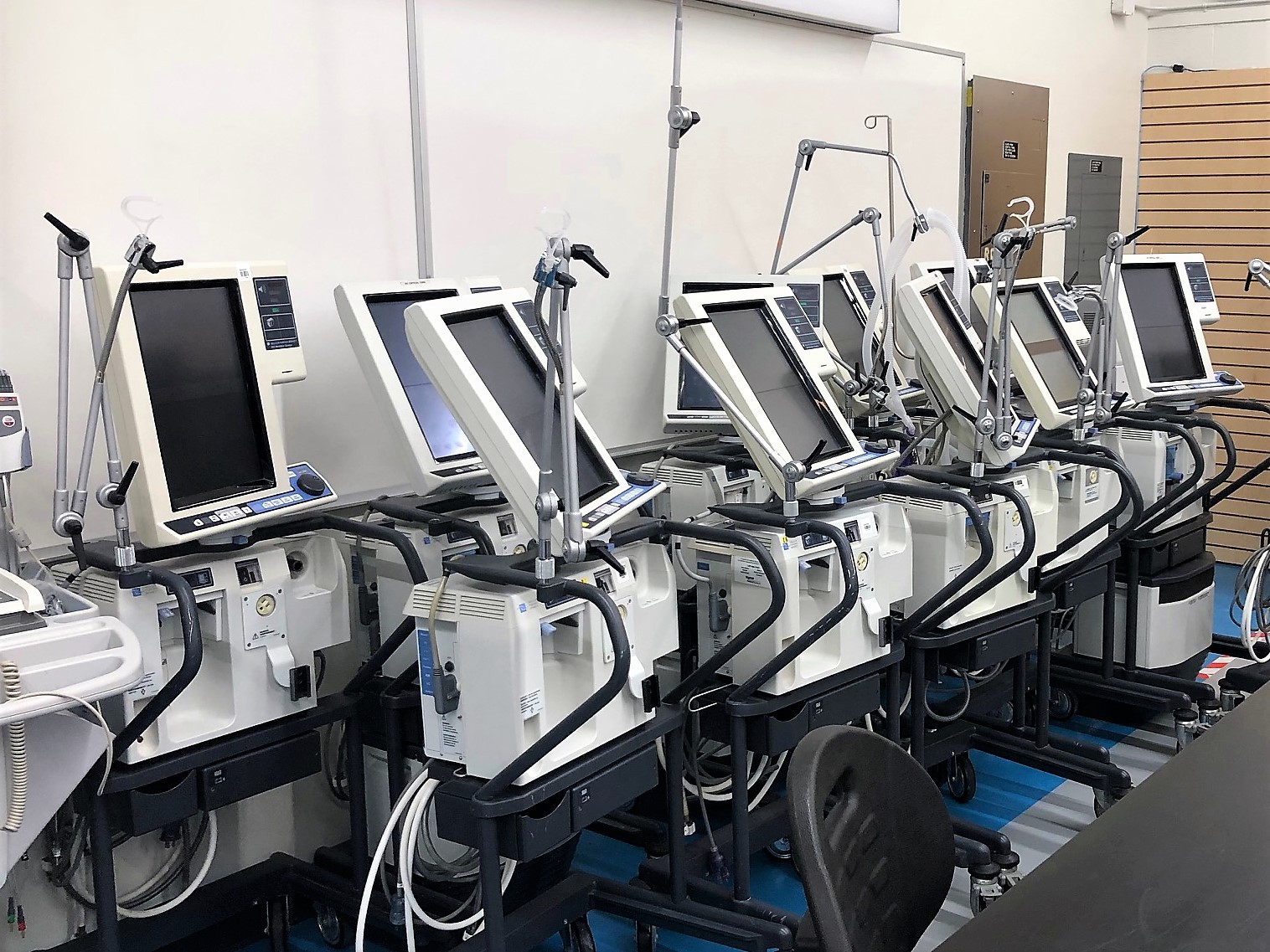
Ventilators similar to the ones being produced by Brampton company 0-Two Medical Tech
With provincial projections showing as many as 1,600 Ontario residents will die from COVID-19 by the end of April, under isolation measures in place prior to this weekend’s enhanced directives, the ventilators will be used in intensive care units across the province. Stricter measures, according to the province, could reduce the number to 200.
Production has been ramped up to deliver the units over a period of four months. They will be delivered as they are assembled, Flavio Volpe, president of Automotive Parts Manufacturers’ Association (APMA) told The Pointer via text. “The company has been in businesses for almost 50 years and has a very strong supply chain,” Volpe said. APMA is a Canadian organization representing producers of equipment and services to the automotive industry.
The Brampton company says it will step up in the face of the pandemic as Ontario enters a crucial week, which could determine whether the infection will overrun the healthcare system or be manageable.
“O-Two Medical Technologies is eager to be part of the global effort to help save lives,” Kim Lassaline, CEO of O-Two Medical Technologies, said in a statement.
“Our e700 ventilator has a proven track record and, together with our partners and the provincial government, we will deliver this critical, life-saving equipment to the people of Ontario.”
The company is partnering with automotive suppliers in Canada, which will provide some of the unit-parts, to scale up its production and produce so many units so fast.
The e700 model is one of several ventilators produced by the company. It has a battery life that can last 24 hours, can be used on patients of various sizes and is simple to run, according to the company.
Ventilators are one of the most sought after pieces of medical equipment around the world during the fight against COVID-19 and are often the last line of care when a patient’s lungs have become compromised because of the virus.
For people who are experiencing severe symptoms, including shortness of breath, they may need ventilation support, Diane Feldman, a registered respiratory therapist and educator at the Lung Association, told The Pointer. “It gets to be so severe that they really are not able to manage their own breathing in their own airway.” The ventilator takes over the job of breathing for the patient, allowing their body to rest so it can recover from the disease, Feldman said.
Underlying health issues play a big role in getting to this point, Neil Johnston, a registered respiratory therapist and CEO of the Lung Association, told The Pointer.
The body can handle one or two things at a time before it starts to fall apart, putting a strain on other parts of the body, including the lungs, he said. “If you already have high blood pressure, or you have a heart problem already, then that becomes even more of a problem to manage.”
Johnston told The Pointer it can take four to five days after a patient is diagnosed with the virus for the lungs to be so damaged, and then a ventilator is needed.
For patients who already have underlying respiratory problems, and have scarring of the lungs that can be caused by a number of factors, such as prolonged exposure to environmental pollutants, earlier cases of pneumonia or a disease like tuberculosis, the weakened lungs often need ventilator help if a viral infection spreads into the respiratory tract.
To see the effect the virus has on the lungs, it’s best to understand the function of lungs that are healthy.
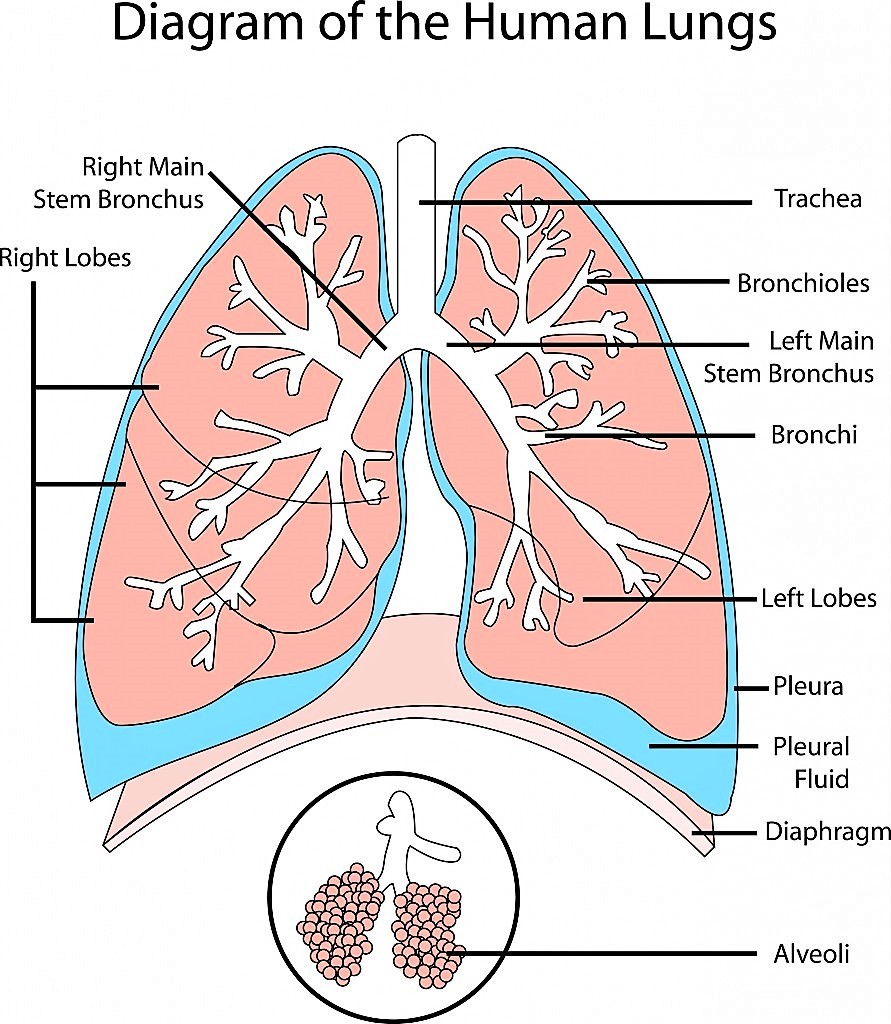
Johnston explained that alveoli are little sacks, or pockets, that collect air inside our lungs. They are created by a membrane, which is a thin barrier, that is in close contact with blood capillaries that carry oxygen into our body (from inhaling) and carbon dioxide out (from exhaling). The silky-thin membrane allows the gases (oxygen and carbon dioxide) in the body to move back and forth very easily.
“Now, what happens with the virus, it causes inflammation,” Johnston said. This makes the membrane grow thick. When this happens, the gases have to move around a larger distance since they can’t easily get through as the membrane is no longer thin. This makes it harder for the lungs to move the amount of oxygen the body needs for normal functioning.
“Ventilators fulfill the function of allowing full function of oxygenation for people whose lungs are failing or can’t initiate breathing on their own,” Johnston said. In the most severe cases, it can be the difference between life and death.
It’s unclear how many ventilators the province has in its possession at this time. Two weeks ago, the Ministry of Health told The Pointer it had over 1,300 beds with ventilators across the province.
Johnston believes the shortage of ventilators is due to a number of reasons. Hospitals only had ventilators on hand based on their usual demand. It’s not clear how many ventilators each hospital in Brampton has. Brampton Civic Hospital has 24 ICU beds, according to information from the Osler healthcare system which runs the facility, and it’s unlikely that Peel Memorial has much demand for ventilators as it’s not a full service hospital and does not admit patients for overnight care. As of April 1, the local area health team that includes Brampton's two facilities, was 27 percent beyond its ventilator capacity, so there were more patients who needed the breathing units than the regular supply could cover.
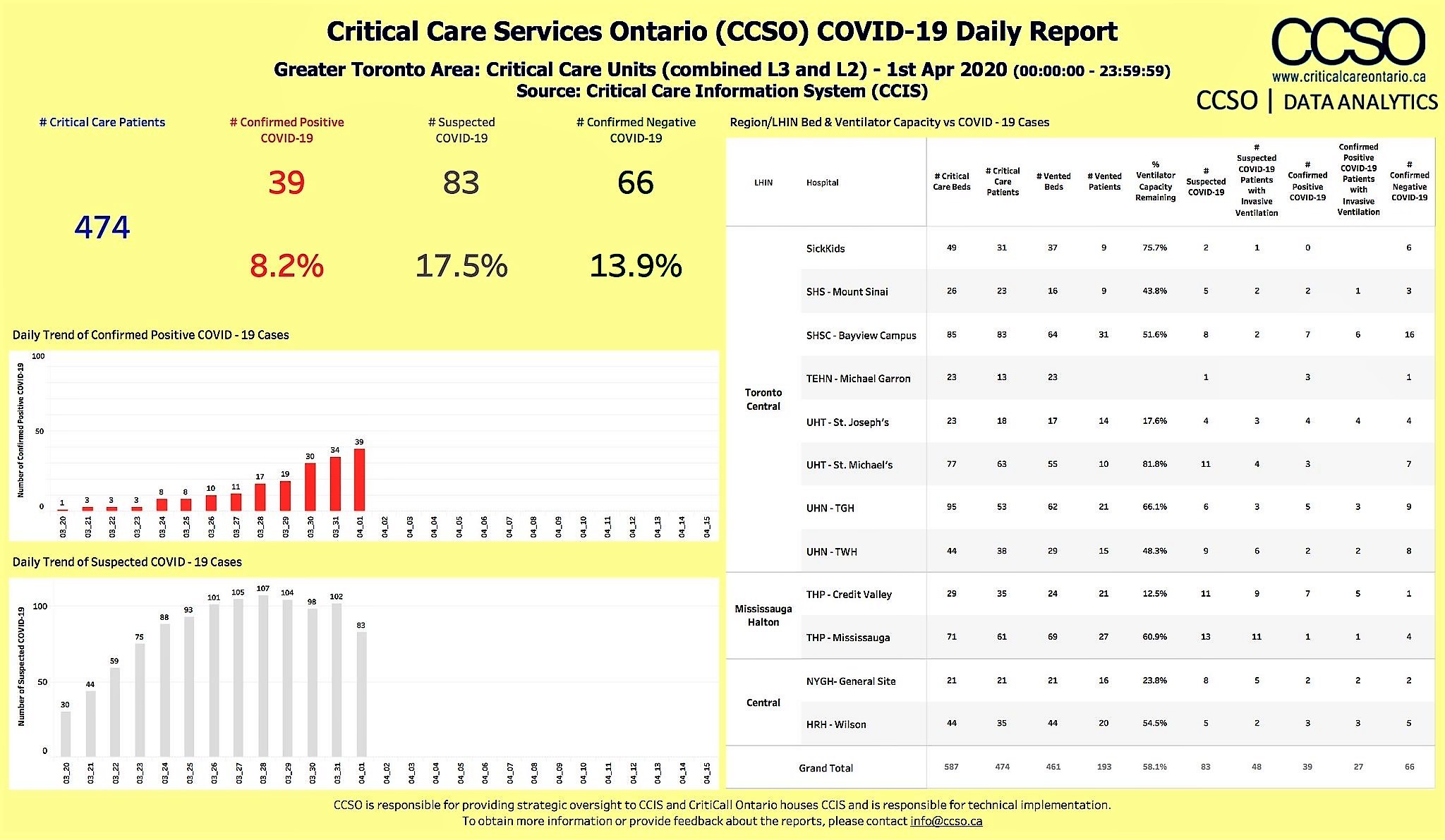
Hospital data as of April 1
The Pointer obtained information on Credit Valley Hospital in Mississauga that shows, as of April 1, it had 24 beds with ventilators and had 21 vented patients in those beds.
It already had more intensive care patients than the number of intensive care beds, with 35 individuals in ICU, but only 29 ICU beds. Eleven patients were suspected to have COVID-19 and nine of them were on ventilators. Last week, Credit Valley had to declare an outbreak when four patients in one unit tested positive for the virus.
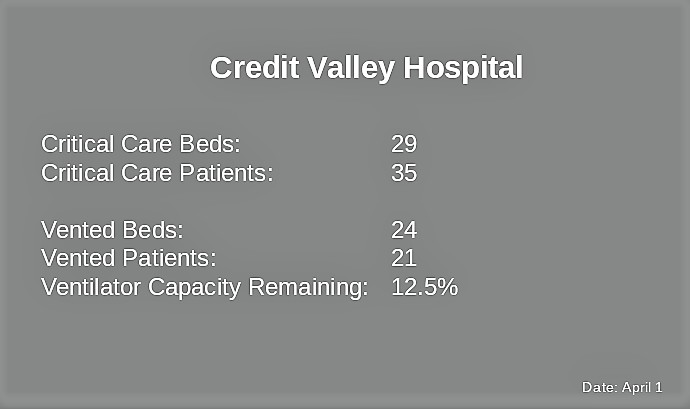
Mississauga Hospital had 71 ICU beds on April 1 and 61 ICU patients. But its remaining ventilator capacity at the time was much higher, with 69 vented beds and 27 patients on those ventilators. Thirteen patients were suspected to have COVID-19 and eleven were on ventilators.
As of Sunday, Mississauga had 279 confirmed cases of COVID-19 and Brampton had 177. But fears of spread were heightened Friday when the province announced there will be 80,000 cases across Ontario by the end of April under the isolation measures in place at the time. Premier Doug Ford announced more measures that took effect midnight Saturday, with more businesses now ordered to remain closed to help slow the spread of infection.
In Mississauga, Brampton and Caledon, lung and bronchus cancer are the third most common cause of death, according to data provided by the Region of Peel. These are also conditions that often create the need for ventilator-assisted breathing.
This reality is problematic for two reasons: more patients need the limited number of ventilators and their underlying conditions make them more susceptible to developing serious symptoms if they are infected by COVID-19.
High rates of diabetes among Peel’s large South Asian-Canadian population is another underlying concern, as such individuals can have a more severe reaction if infected by the virus.
Any potential shortage of ventilators can be partly due to officials not taking a strong approach to planning for the “what if”, especially after the 2009 H1N1 flu epidemic, when a new strain of the influenza virus wreaked havoc on the healthcare system, Johnston said. “We didn't run out [of ventilators] but that was sort of a wakeup call.”
Part of the shortage may be also due to the price of these ventilators, which can cost up to $50,000. “Would you want to have tens of thousands of expensive pieces of equipment waiting somewhere, ready to be used?” he said.
The demand for the equipment across the world also plays into the shortage. Every hospital in the world needs the equipment, Johnston said. “It’s just putting a strain on the capacity of our systems to build and provide the inventory.”
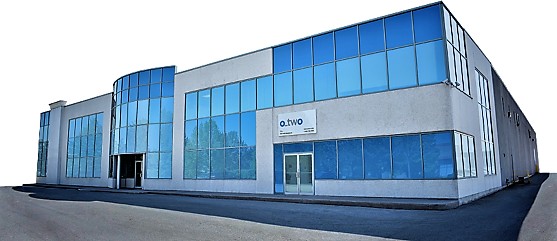
O-Two Medical Tech's Brampton facility
At this time, it’s not clear how the ventilators will be distributed amongst hospitals across the province. The Pointer asked the Ministry of Health but did not hear back prior to publication.
The region of Peel saw its first COVID-19 related death on March 26. The man, who was in his 70’s, had underlying health issues and was being treated at Brampton Civic Hospital. “Any loss of life is certainly tragic, but especially so in the midst of these difficult times. Peel Public Health extends our deepest condolences to the family,” Dr. Lawrence Loh, interim medical officer of health at the Region of Peel, said in a press release at the time, warning that there likely would be more deaths in the region. Three more patients have since died, bringing the total to four people in Peel now deceased after contracting COVID-19.
To help address the impacts, the province has launched the Ontario Together Fund. The $50 million fund will help businesses in the private sector switch operations to manufacture essential supplies, such as gowns, face shields and masks, hand sanitizer, testing equipment and ventilators, according to a press release. “Ontario has an army of innovators, entrepreneurs, and the hardest-working people in the world ready to roll up their sleeves, support frontline healthcare workers, and beat this virus,” Ford said in the press release.
The ventilators are an essential tool Johnston believes will be helpful in more than one way. “Down the road, I think people are going to say ‘well maybe we need to have this safety cushion of extra equipment around’, because, you know, when's the next episode of this going to happen?”
Email: [email protected]
Twitter: @nida_zafar
Tel: 416-890-7643
COVID-19 is impacting all Canadians. At a time when vital public information is needed by everyone, The Pointer has taken down our paywall on all stories relating to the pandemic to ensure every resident of Brampton and Mississauga has access to the facts. For those who are able, we encourage you to consider a subscription. This will help us report on important public interest issues the community needs to know about now more than ever. You can register for a 30-day free trial HERE. Thereafter, The Pointer will charge $10 a month and you can cancel any time right on the website. Thank you.
Submit a correction about this story


